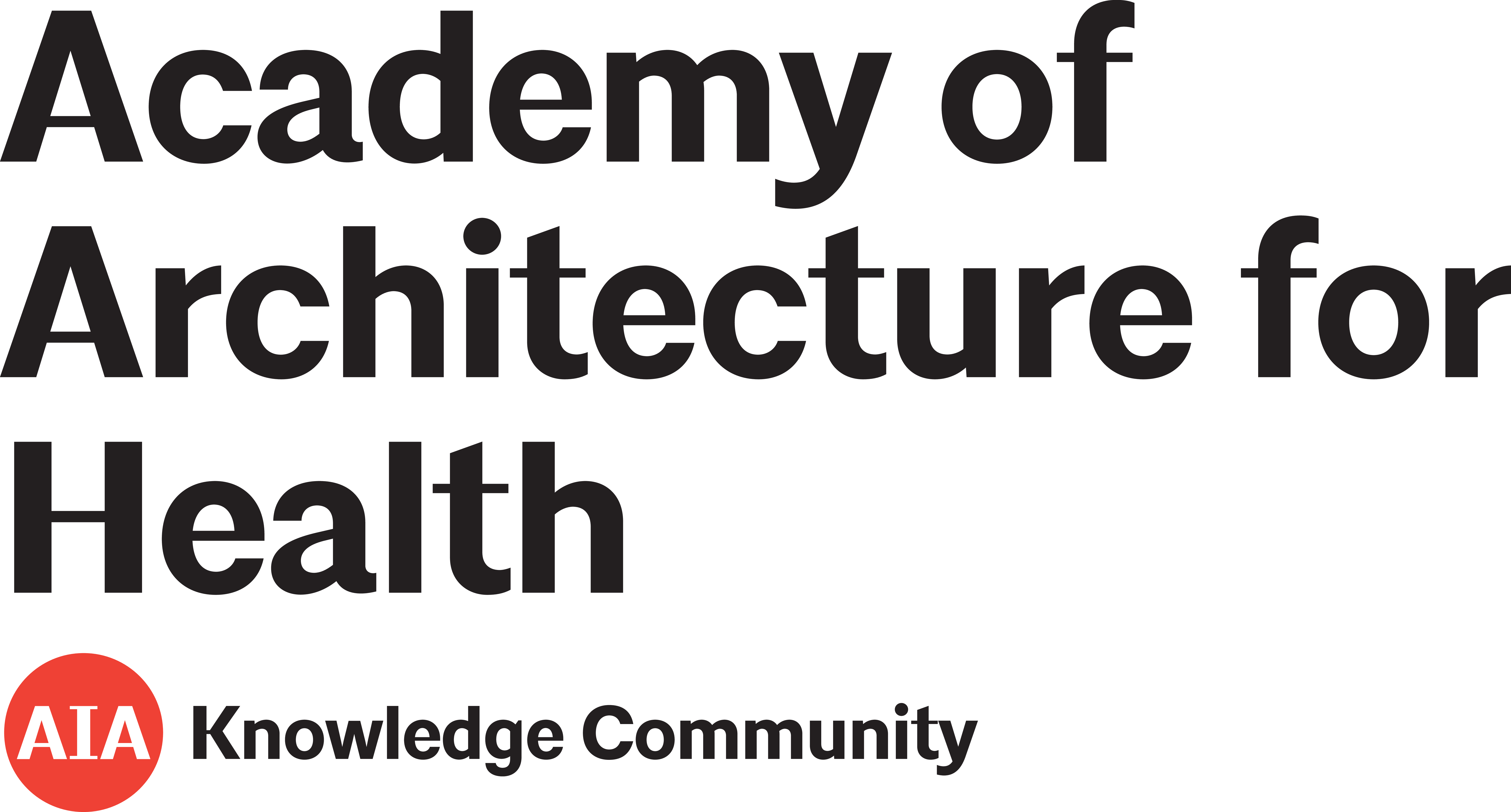An Empirical Examination of Patient Room Handedness in Acute Medical-Surgical Settings
2010
Health Environments Research & Design Journal
Journal Article
Issue 1
Volume 4
Pages 11-33
Author(s): Pati, D., Cason, C., Harvey Jr., T.E., Evans, J.
The initial cost of designing hospitals with standardized same-handed patient rooms is typically much higher than the cost of hospitals designed with mirror-image configurations. This is because same-handed units require separate utility lines for each patient room rather than shared medical gas lines and bathroom plumbing lines between every two rooms.
Added January 2016
Destination Bedside
2012
The Journal of Nursing Administration
Journal Article
Issue 5
Volume 42
Pages 256-265
Author(s): Watkins, N., Kennedy, M., Lee, N., O’Neill, M., Peavey, E., DuCharme, M., & Padula, C.
Patient-centered care (PCC) has been at the core of healthcare reform. Improvements and advancements in Healthcare Information Technology (HIT), Electronic Health Records and inpatient unit layout have been some means that aim to achieve PCC. Also key to PCC is the alleviation of medical errors, which HIT and related technology can help achieve.
Added January 2016
Wayfinding Behaviors In A Healthcare Environment: A Case Study Analysis Of Individual Differences
2015
Gazi University Journal of Science Part B: Art, Humanities, Design and Planning
Journal Article
Issue 3
Volume 3
Pages 37–45
Author(s): Sevinç, Z., Bozkurt, E.
Wayfinding in healthcare facilities is often a challenge. Given the complexity of the space, its multi-functionality and the assortment of activities that take place on its premises, the inability to smoothly find one’s way in a hospital can add to a patient’s stress.
Added December 2015
Network of Spaces and Interaction-Related Behaviors in Adult Intensive Care Units
2014
Behavioral Sciences
Journal Article
Issue 4
Volume 4
Pages 487-510
Author(s): Rashid, M., Boyle, D. K., Crosser, M.
Using three spatial network measures of “space syntax”, this correlational study describes four interaction-related behaviors among three groups of users in relation to visibility and accessibility of spaces in four adult intensive care units (ICUs) of different size, geometry, and specialty. Systematic field observations of interaction-related behaviors show significant differences in spatial distribution of interaction-related behaviors in the ICUs.
Added November 2015
A study of agitation, conflict and containment in association with change in ward physical environment
2015
Journal of Psychiatric Intensive Care
Journal Article
Issue 01
Volume 11
Pages 27-35
Author(s): Jenkins, O., Dye, S., Foy, C.
Patients in psychiatric intensive care units or PICUs can be a threat to themselves, staff, and other patients because of aggressive and agitated behavior. The authors allude to past research where such behavior has been attributed to age, gender, diagnosis, psychopathology, substance abuse, staff-patient interaction, as well as staff, patient, and environmental traits.
Added October 2015
Impact of the physical environment of psychiatric wards on the use of seclusion
2013
The British Journal of Psychiatry
Journal Article
Issue 2
Volume 202
Pages 142-149
Author(s): van der Schaaf, P. S., Dusseldorp, E., Keuning, F. M., Janssen, W. A., Noorthoorn, E. O.
Disturbed behavior and patient aggression within psychiatric wards can threaten both patient and staff safety. To manage these patients, psychiatric wards often will use coercive measures such as solitary confinement. Patient aggression arises from a complex interaction between patient characteristics, staff characteristics, and the characteristics of the physical environment of the psychiatric ward itself. Most studies have focused on the dynamics between patient and staff characteristics; little research has been done to investigate how the physical environment of psychiatric wards might influence patient aggression and subsequently the use of coercive measures.
Added October 2015
Healthscapes: The role of the facility and physical environment on consumer attitudes, satisfaction, quality assessments, and behaviors.
1995
Health Care Management Review
Journal Article
Issue 2
Volume 20
Pages 48-61
Author(s): Hutton, J. D., Richardson, L. D.
Added September 2015
Including patients, staff and visitors in the design of the psychiatric milieu
2013
Facilities
Journal Article
Issue 9/10
Volume 31
Pages 379-390
Author(s): Perkins, N. H.
Most research addressing environmental design for healthcare facilities focuses on expert-determined and expert-driven outcomes. Little attention has been given to the perspectives offered by those who are ultimately using the facilities, namely the patients, staff, and visitors. Participatory design and planning (PDP) is a method that takes these non-expert opinions into consideration while operating under three assumptions. First, healthcare facilities are complex environments that require a team of people who can understand and maintain structured information necessary for optimum design.
Added December 2014
The Impact of Windows and Daylight on Acute-Care Nurses' Physiological, Psychological, and Behavioral Health
2014
HERD: Health Environments Research & Design Journal
Journal Article
Issue 4
Volume 7
Pages 35-61
Author(s): Zadeh, R. S., Shepley, M. M., Williams, G., Chung, S. S..
Added December 2014
A plasma display window? – the shifting baseline problem in a technologically mediated natural world
2009
Journal of Environmental Psychology
Journal Article
Author(s): Kahn, P. H. Jr., Friedman, B., Brian Gill, Hagman, J., Severson, R. L., Freier, N. G., Feldman, E. N., Carrere, S., Stolyar, A.
The general purpose of this study is to test the physical and psychological effects of experiencing nature through a technology medium. Past research has shown that contact with nature can lead to “enjoyment, satisfaction, and increased levels of satisfaction with one’s home, one’s job, and with life in general” (Kaplan & Kaplan, 1989, p. 173). So in an fast-changing world of technology-mediated healthcare, the question posed in this study revolves around whether simulated nature scenes can elicit the same health benefits that real nature has shown to produce.
Added November 2014
New Zealand children’s health camps: therapeutic landscapes meet the contract state
2000
Social Science & Media
Journal Article
Issue 7
Volume 51
Pages 1047-1059
Author(s): Kearns, R. A., Collins, D. C. A.
New Zealand started to offer children health camps in 1919, responding to the government’s increased interest in the well-being of children. Gesler recognized that the modern healthcare system failed to offer therapeutic landscapes where children could experience both physical and mental healing. It is believed that if children engage more with nature—fresh air, clean water, and beautiful scenery—this can have great healing power. Gesler went on to discover the first children’s health camps, and what started as small, localized projects became a national network of permanent camps supported by the government.
Added November 2014
Effectiveness of installing overhead ceiling lifts: Reducing musculoskeletal injuries in an extended care hospital unit.
2002
American Association of Occupational Health Nurses Journal
Journal Article
Issue 3
Volume 50
Pages 120-127
Author(s): Ronald, L. A., Yassi, A., Spiegel, J., Tate, R. B., Tait, D., Mozel, M. R.
High rate of musculoskeletal injuries (MSI) among healthcare workers is well documented. Lifetime prevalence rates of back pain greater than 70 percent have been reported and higher incidence rates of MSI have been observed in healthcare workers compared to the general population and two other occupation groups. Mechanical lifting equipment has been recommended as an effective tool for decreasing the rate and severity of MSI in healthcare workers.
Added November 2014
Design Research and Behavioral Health Facilities
2013
The Center for Health Design
Report
Author(s): Shepley, M. M., Pasha, S.
In the interest of determining the state of knowledge on the relationship between behavioral health and the physical environment, the authors explored the literature on research, guidelines, and funding related to this topic.
Added November 2014
The Effect of Hospital Unit Layout on Nurse Walking Behavior
2012
HERD: Health Environments Research & Design Journal
Journal Article
Issue 1
Volume 6
Pages 66-82
Author(s): Yi, L., Seo, H.-B.
Over the course of a typical shift, nurses spend a lot of time on their feet, walking back and forth on the unit to take care of patients' needs. The long distances that nurses walk is a topic of concern in the industry. Some believe it may potentially impact the amount of time spent with patients and also because of the physical toll on nurses, day after day. Researchers are attempting to understand whether unit layout and design might be revised to reduce walking distances and create efficiencies that enhance patient care.
Added September 2014
Environmental Affordances: Designing for Family Presence and Involvement in Patient Care
2013
HERD: Health Environments Research & Design Journal
Journal Article
Issue 4
Volume 6
Pages 53-75
Author(s): Choi, Y.-S., Bosch, S. J
One of the ways that hospitals strive to provide patient-centered care is by altering the physical facility to incorporate larger visitor and family space within patient rooms. It is believed that this space increases comfort and allows family members to spend more time with and better support their loved one in the hospital, impacting patient care.
Added September 2014
The Environment of Inpatient Healthcare Delivery and Its Influence on the Outcome of Care
2012
HERD: Health Environments Research & Design Journal
Journal Article
Issue 1
Volume 6
Pages 104-116
Author(s): O'Connor, M., O'Brien, A., Bloomer, M., Morphett, J., Peters, L., Hall, H., Parry, A., Recoche, K., Lee, S., Munro, I.
There is a growing body of evidence demonstrating that in all healthcare settings, the design of discipline-specific space can influence patients and their health outcomes. The contribution of the physical environment to quality of life and well-being is also supported. Healthcare delivery has changed over the last three decades; however, the authors note that some ICUs and emergency departments have not fully adapted to these changes, whereas palliative care and women’s health have adapted to include more family involvement and patient-driven changes. Environments such as labor and delivery units have benefitted from active consumer involvement in design.
Added September 2014
Image and Emotion: From Outcomes to Brain Behavior
2012
HERD: Health Environments Research & Design Journal
Journal Article
Issue 4
Volume 5
Pages 40-59
Author(s): Nanda, U., Zhu, X., Jansen, B. H.
Existing outcome studies have proven the link between exposure to visual images (with nature content) and improvements in stress, anxiety, and pain perception. However, an understanding of the underlying perceptual mechanisms has been lacking.
Added September 2014
Can we help persons with dementia find their way in a new environment?
2003
Aging & Mental Health
Journal Article
Issue 5
Volume 7
Pages 363-371
Author(s): McGilton, K. S., Rivera, T. M., Dawson, P.
Added September 2014
Quality of life and building design in residential and nursing homes for older people
2004
Ageing and Society
Journal Article
Issue 6
Volume 24
Pages 941-962
Author(s): Parker, C., Barnes, S., McKee, K., Morgan, K., Torrington, J., Tregenza, P.
Older people living in residential and nursing care homes spend a large proportion of their time within the boundaries of the home, and may depend on the environment to compensate for their physical or cognitive frailties. Regulations and guidelines on the design of care buildings have accumulated over time with little knowledge of their impact on the quality of life of building users. The Design...
Added September 2014
Environmental determinants of quality of life in nursing home residents with severe dementia
2012
Journal Of The American Geriatrics Society
Journal Article
Issue 7
Volume 60
Pages 1230-1236
Author(s): Garre-Olmo, J., López-Pousa, S., Turon-Estrada, A., Juvinyà, D., Ballester, D., Vilalta-Franch, J.
Studies show that more than 50% of the residents in nursing homes suffer from moderate or severe dementia. The authors refer to literature that indicates that in the last 20 years, the culture of imparting care in nursing homes has evolved from a focus on safety, uniformity, and medical concerns to health promotion and Quality of Life (QOL).
Added September 2014




